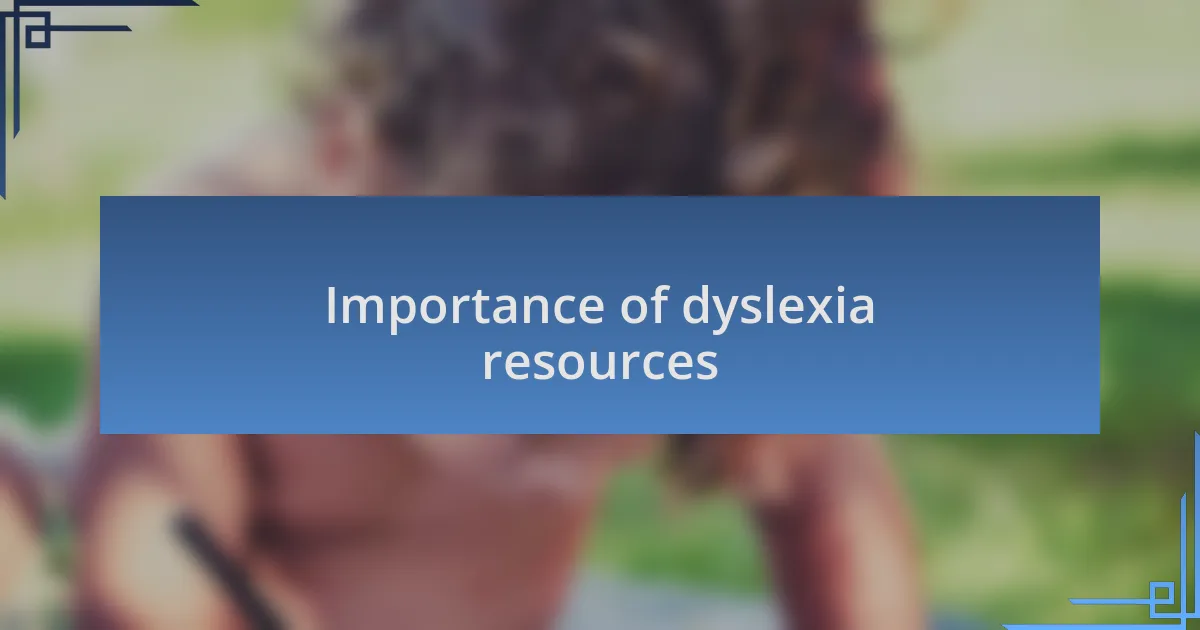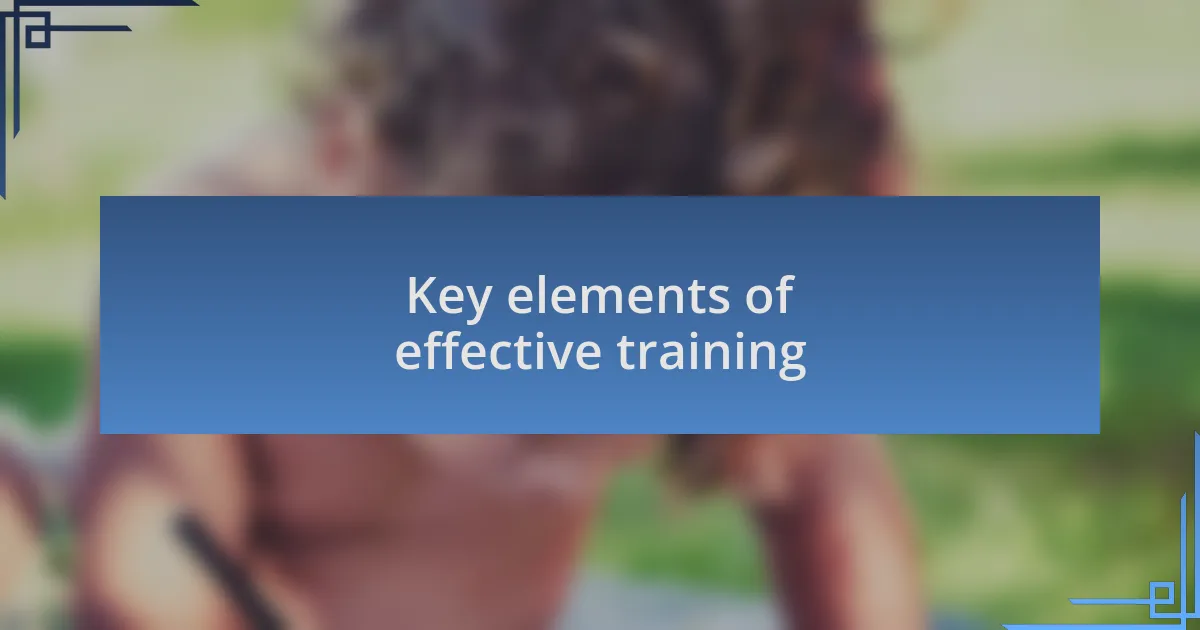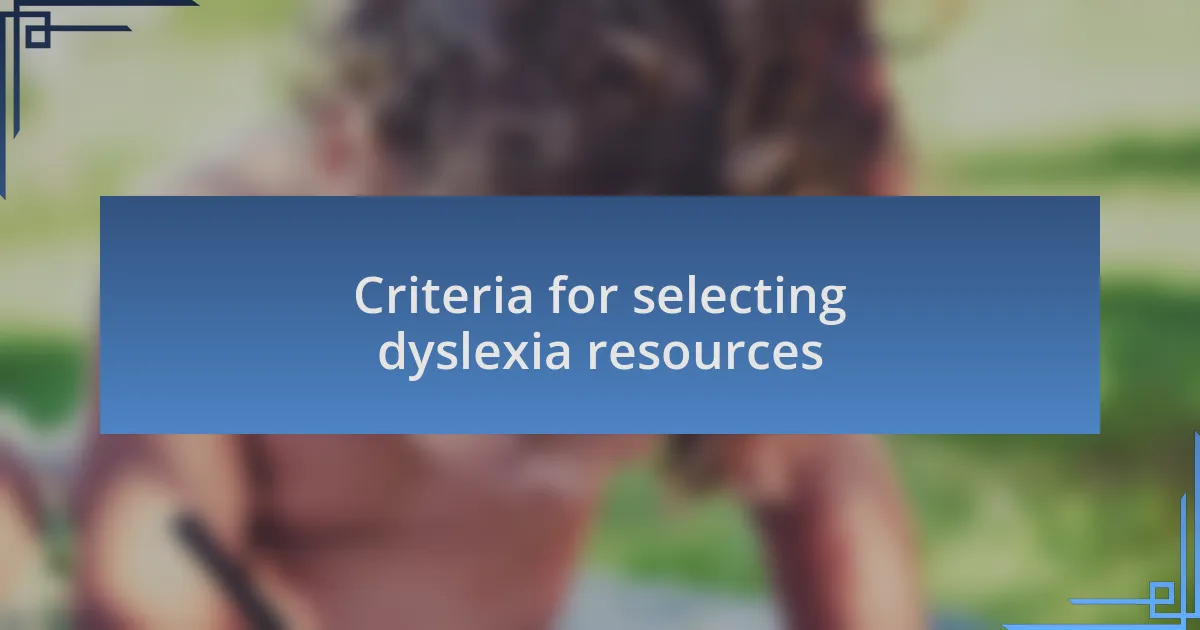Key takeaways:
- Dyslexia significantly affects emotional well-being, leading to challenges such as anxiety and low self-esteem among individuals.
- Access to tailored dyslexia resources can transform learning experiences and improve both student and parent confidence.
- Effective dyslexia training requires a personalized approach, incorporating multimodal strategies and ongoing support for continuous improvement.
- Evaluating dyslexia resources should focus on relevance, creator credibility, and the promotion of interactivity to enhance engagement and learning retention.

Understanding dyslexia and its challenges
Dyslexia is more than just a reading difficulty; it’s a complex condition that affects how a person processes language. I remember my friend sharing her struggles with simple tasks, like spelling her name. It was heartbreaking to see how much frustration this caused her, making me question how often we underestimate the impact of this learning difference.
One of the most challenging aspects of dyslexia is the emotional toll it takes on individuals. I’ve seen children who, despite their intelligence, feel defeated when faced with reading assignments. Have you ever watched someone’s confidence fade away because they couldn’t keep up? It’s tough to witness, and it highlights the need for empathy and understanding in educational settings.
The challenges associated with dyslexia can often lead to anxiety and low self-esteem. I recall a student I mentored who would avoid participating in class discussions, fearing judgment over his reading skills. This made me realize that beyond academic support, we also need to nurture their emotional well-being. How can we create an environment where they feel safe to express themselves without the weight of judgment?

Importance of dyslexia resources
Dyslexia resources are vital in providing strategies and tools that empower individuals to navigate the complexities of their condition. From my experience as a mentor, I’ve seen firsthand how access to tailored educational materials can transform a student’s learning journey. It’s like handing someone a map when they feel lost in a city; these resources guide them toward success.
Moreover, the emotional support that dyslexia resources offer cannot be underestimated. I once worked with a parent who was overwhelmed by her child’s struggles. After introducing her to various support networks and tools, I noticed a shift not just in her child’s attitude but in her own. It made me realize that when parents feel equipped, they can better support their children’s individual needs.
Ultimately, these resources serve as a bridge, connecting learners with the knowledge and confidence they need to thrive. Have you ever thought about how a single resource could spark a moment of understanding or a breakthrough in learning? I have witnessed this magic unfold when the right tool falls into a person’s hands, opening up new pathways for success.

Key elements of effective training
When it comes to effective dyslexia training, a personalized approach stands out as a key element. I recall a workshop where I observed the transformation of a young learner when the training was tailored to her specific strengths and challenges. This experience reinforced my belief that understanding each individual’s unique needs can significantly enhance their learning experience.
Another essential component is the incorporation of multimodal strategies. In my sessions, I’ve found that combining visual aids, auditory inputs, and hands-on activities can engage different learning styles effectively. Have you ever noticed how some students light up when they interact with materials that resonate with them? That engagement is a powerful motivator, and it highlights the importance of diverse teaching methods.
Finally, ongoing support and feedback create an environment for continuous improvement. During one of my mentoring experiences, providing regular check-ins helped a struggling student adjust their learning techniques in real time. This back-and-forth exchange is not just about correcting mistakes; it fosters confidence and encourages a growth mindset, essential for anyone facing challenges related to dyslexia.

Criteria for selecting dyslexia resources
Selecting the right dyslexia resources involves a careful evaluation of their relevance and effectiveness. For instance, I once stumbled upon a resource that seemed promising but was overly complex for the age group it targeted. This experience taught me that understanding the audience’s specific age and learning level is crucial in deciding which materials to include. Does a resource truly align with the needs of its intended users? That’s a question worth considering.
Another important criterion is the credibility of the resource creator. I often prioritize materials developed by experts in dyslexia, such as educators with specialized training or researchers in the field. I remember attending a seminar led by a renowned dyslexia specialist, which made me realize how their expertise added immense value to the resources they provided. Wouldn’t you trust a guide written by someone who fully understands the struggles and triumphs faced by those with dyslexia?
Lastly, I believe in examining how resources promote engagement through interactivity. I recall using a particular app that incorporated gamified elements, which kept my students engaged and motivated. This level of interaction fostered a sense of ownership over their learning journey, a factor I consistently seek when curating resources. Are we not more likely to retain information when we actively participate in our learning? It’s a simple truth that I’ve observed time and again.

Personal insights on resource effectiveness
When evaluating the effectiveness of dyslexia resources, I can’t help but reflect on the power of accessibility. I recall a time when I found a beautifully illustrated reading program that captivated my attention, but it was riddled with jargon and complicated instructions. This experience underscored for me that even the most visually appealing materials can fall short if they don’t speak the language of the user. How often do we overlook the importance of simplicity in our quest for quality?
Moreover, I’ve noticed that the success of a resource often hinges on feedback from users—both students and educators. I vividly remember implementing a phonics game in my class. The students’ laughter and engagement made it clear they were learning, but their parents’ positive feedback afterward added a layer of validation. It made me consider: what weight do we give to the voices of those directly interacting with these materials? Their insights can be invaluable in discerning what works and what doesn’t.
Finally, I find that the actual implementation of these resources can vary significantly. There was a time when I enthusiastically introduced a highly rated resource only to realize that it wasn’t fitting seamlessly into my lesson plans. This taught me that effectiveness isn’t just about the resource itself but how it integrates with existing teaching strategies. Have you ever experienced that awkward mismatch between a great tool and your own approach? It’s a reminder that context is key in maximizing the impact of any resource.